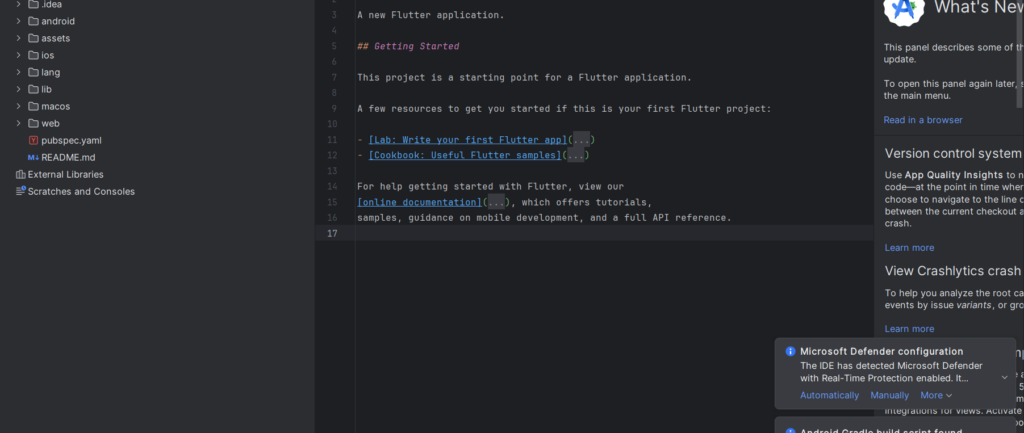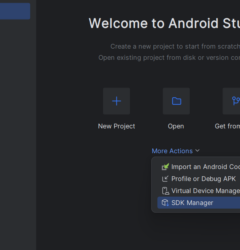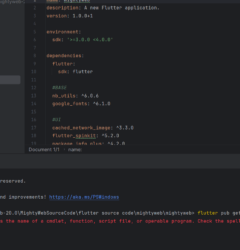- Email:[email protected]
- phone:+971553021783
Getting Started: Build & Run
Important: All the steps below must be followed to build and run the application.
1. Download Project:
- Download your Flutter project and locate the project folder.
- Open the project using your preferred IDE (Android Studio, Visual Studio Code, or IntelliJ IDEA).
2. Get Dependencies:

- After the project is loaded successfully, you need to install all the dependencies listed in the
pubspec.yamlfile. - Open a terminal in the project’s root directory and run the following command:arduino Copy code
flutter pub get

If any Error Look here
- Alternatively, you can click on “Pub get” in the
pubspec.yamlfile if you are using an IDE that supports this feature.
3. Build and Run App:
- In Android Studio, locate the main toolbar.
- In the target selector, select an Android device for running the app. If none are listed as available, select “Tools” > “Android” > “AVD Manager” and create a new Android Virtual Device (AVD).
- Click the run icon in the toolbar, or invoke the menu item “Run” > “Run.”
Note: If you are not using Android Studio or IntelliJ IDEA, you can use the command line to run your application. Make sure the Flutter path is set in your Environment variables, then run the following command:
arduinoCopy code
flutter run
4. Try Hot Reload:
- Flutter offers a fast development cycle with Stateful Hot Reload. This allows you to reload the code of a live running app without restarting or losing app state.
- Make a change to the app source code, then tell your IDE or command-line tool that you want to hot reload. You’ll see the change reflected in your simulator, emulator, or device.
By following these steps, you should be able to build and run your Flutter application successfully.


Editor